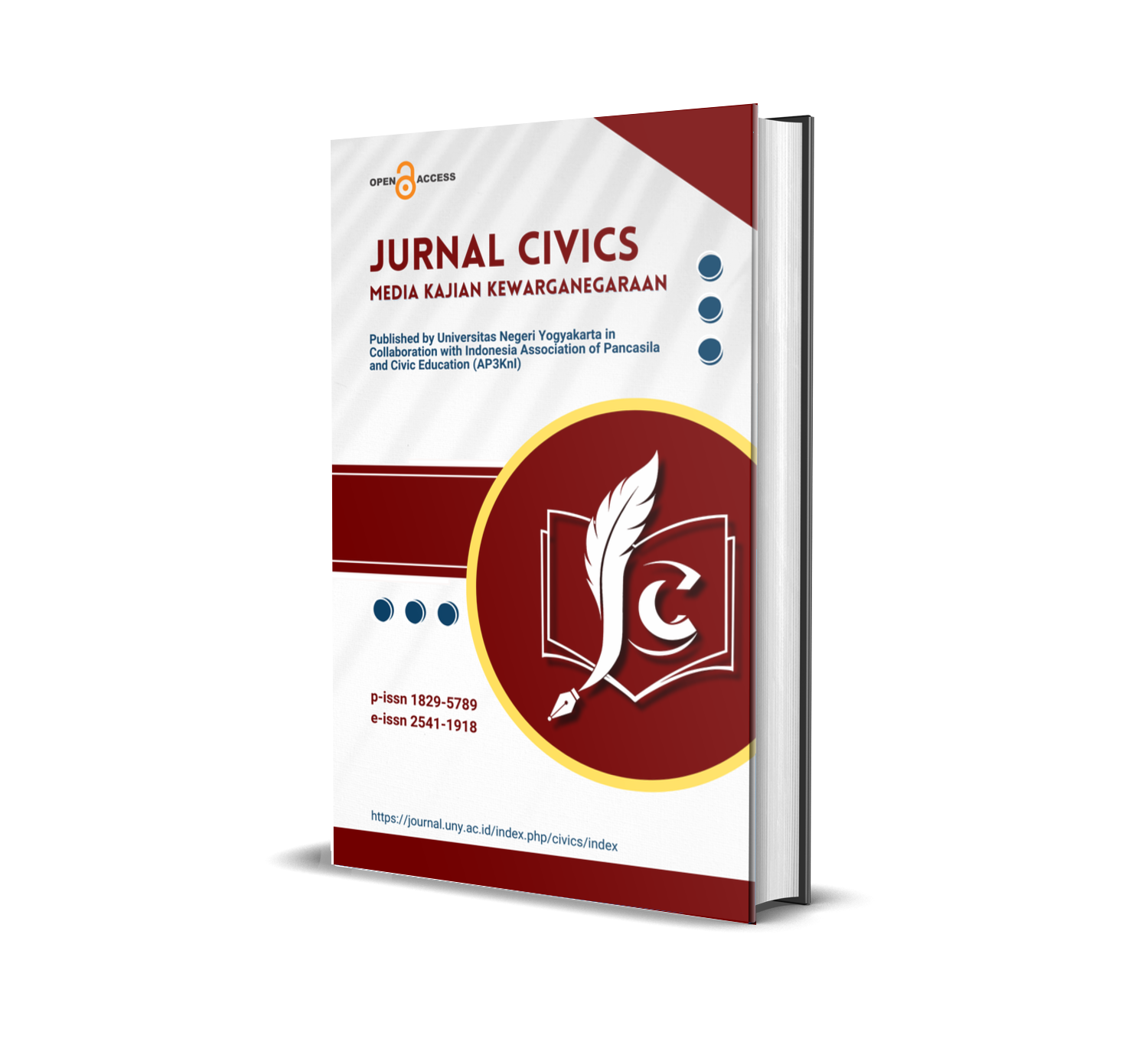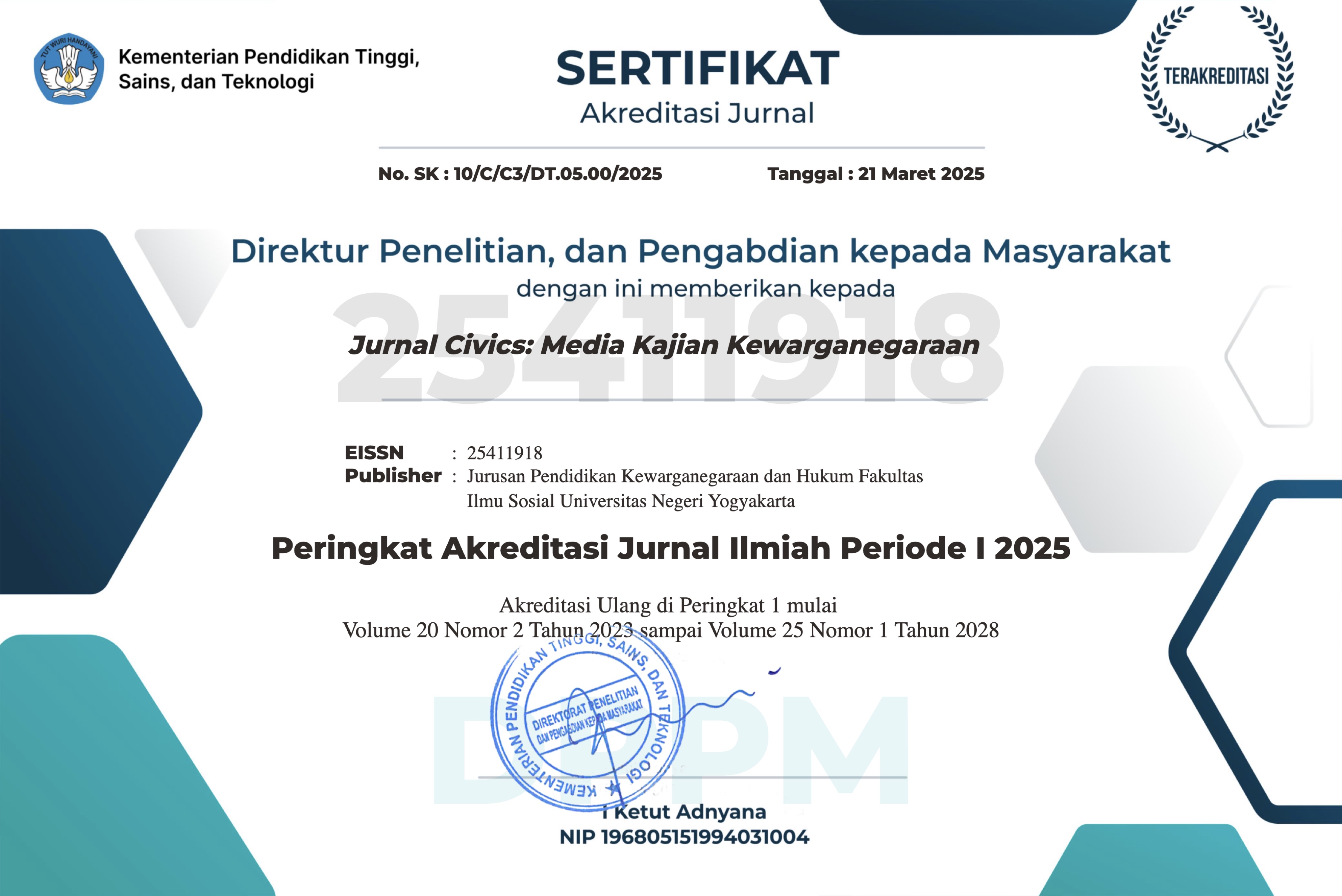Pengadilan Hak Asasi Manusia dan pelanggengan budaya impunitas
DOI:
https://doi.org/10.21831/civics.v7i1.3461Keywords:
Court of human rights, impunity, violation of human rightsAbstract
This article aims to analyze 1) fundamental weakness within Act of Court of Human Rights, 2) portrait of impunity in human rights violation, and 3) reform of law system of court of human rights. The discussion of this article results some points of thought: first, some weaknesses of Act no. 26/2000: 1) partial adoption of its jurisdiction from 1998 Rome Statute, 2) some weaknesses in judicial procedure of the Law, 3) deviation of translation toward principles and provisions on genocide and crime against humanity which are defined in Rome Statute, 4) politicization of human rights violation in the former times namely before enactment of the Law on Court of Human Rights. Second, impunity"”in the plain definition: the lack of punishment against crime or violation"”still occurs in Indonesia. It is drawn on four main factors: power factor, legal factor, cultural factor, and international factor. Third, it is urgent to reform legal system of human rights court. It can be initiated by ratification of Rome Statute, followed by amendment of the Law on Court of Human Rights.
Downloads
Published
How to Cite
Issue
Section
Citation Check
License
The authors agree to transfer the transfer copyright of the article to The Jurnal Civics: Media Kajian Kewarganegaraan effective if and when the paper is accepted for publication.
Authors and other parties are bound to the Creative Commons Attribution-NonCommercial-ShareAlike 4.0 International License for the published articles, legal formal aspect of journal publication accessibility refers to Creative Commons Attribution-NonCommercial-ShareAlike 4.0 International License (CC BY-NC-SA).










